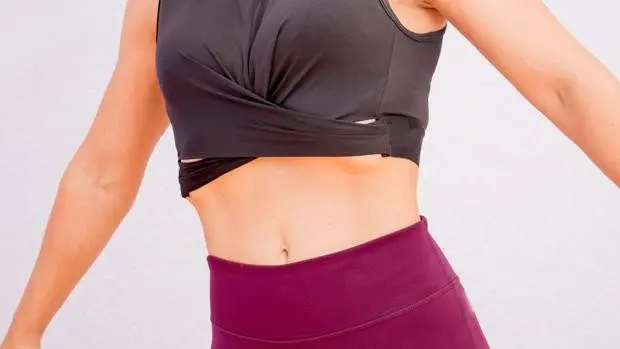Contents
What are hypopressives and how can they help you get fit?
Fitness
Among all the points in favor of hypopressives, in addition to reducing the diameter of the waist, they can be performed daily because they do not involve muscle wasting

The reason hypopressives are called abdominal hypopressive gymnastics It is due to the fact that this exercise can be considered a sport in itself. The most amazing? The fact that there is quick results, the number one wish of those who start in the exercise and need to see changes in record time.
But doing hypopressives is not like getting into the gym and starting to squat: if this exercise requires a series of guidelines to be performed correctly, the hypopressive they should be done, at least initially, under the supervision of an expert. This is the advice of Lucía Colilla (@ lucia.hipopresivos_lpf), an expert in hypopressive techniques and certified in the Low Pressure Fitness method: «It is advisable to do them with a certified person. I work with classes online and live and it is important to have that personalized attention ».
In addition, it should be noted that the objective of hypopressives can be in two aspects: as physical exercise or as rehabilitation. As the specialist says, many practice them to take care of themselves while others aim to do it to improve the pelvic floor: “Hypopressive instructors usually work together with physiotherapists,” she clarifies.
Benefits
- Prevention of herniated discs, inguinal or umbilical.
- Avoid the descent of the pelvic organs.
- Prevents urinary incontinence.
- Prevents injuries.
- Improves general health and fitness.
- Helps prevent the descent of pelvic organs to avoid uterine or bladder prolapse, among others.
- Increases respiratory capacity.
- Helps intestinal transit.
- Postural improvement.
- Decreases the diameter of the waist.
Another point in favor of hypopressives, in addition to reducing the diameter of the waist, is that can be done daily about twenty minutes because “it is not an exercise that will exert muscle wasting.” The expert says that with two or three days a week and a half hour would be more than enough, but that everything will depend on the situation of each one and what the specialist estimates.
Contraindications
There are a number of aspects to take into account if you are going to become hypopressive:
– Pregnant women cannot apnea.
– They are contraindicated when there are coronary pathologies, spinal injuries or intestinal inflammation.
– It is important to understand that hypopressives are a very specific technique that must be practiced with the supervision of a professional in order to be effective, you cannot learn by watching videos without supervision.
– They lose their effect if they are practiced focusing on apnea and forgetting the posture.
– Those people with tension problems should not work apnea.
– Any disease that the specialist considers that the hypopressive method cannot do anything.
What you should know
The training with Hypopressives LPF (Low Pressure Fitness) in which Lucía Colilla works is an integrated and global program that combines hypopressive techniques, postural reeducation, myofascial release, neurodynamics and respiratory technique. As she herself affirms, the technique can be done by anyone, although pregnant women could not perform the technique. a.
The first thing to know is that to do these exercises you do not have to carry out abdominal breathing but chest breathing. «You have to breathe through your nose and exhale twice as long through your mouth. The abdomen does not intervene in the breathing and you work doing three breaths. When we have reached the third exhalation we must remain in expiratory apnea, that is, when you have released the air is when you breathe and the ribs open », explains the instructor.
In addition, there are also the postural fundamentals, a part just as important as breathing. The specialist explains that you have to place your feet parallel to the ciliac ridges and have the scapulae separated, knees unlocked, ankles flexed and pelvis neutral.
«I advise that the first hypopressives that are made are lying on the floor to have that reference and to know that the lumbar does not touch the ground, in addition to making sure that the back is aligned. When you are on the ground and do the first apneas you notice a greater visceral suction than if we are standing because gravity makes the viscera not rise as much. If you cannot lie down, then you have to try sitting leaning against the wall, “Lucía Colilla concludes in her explanation.









